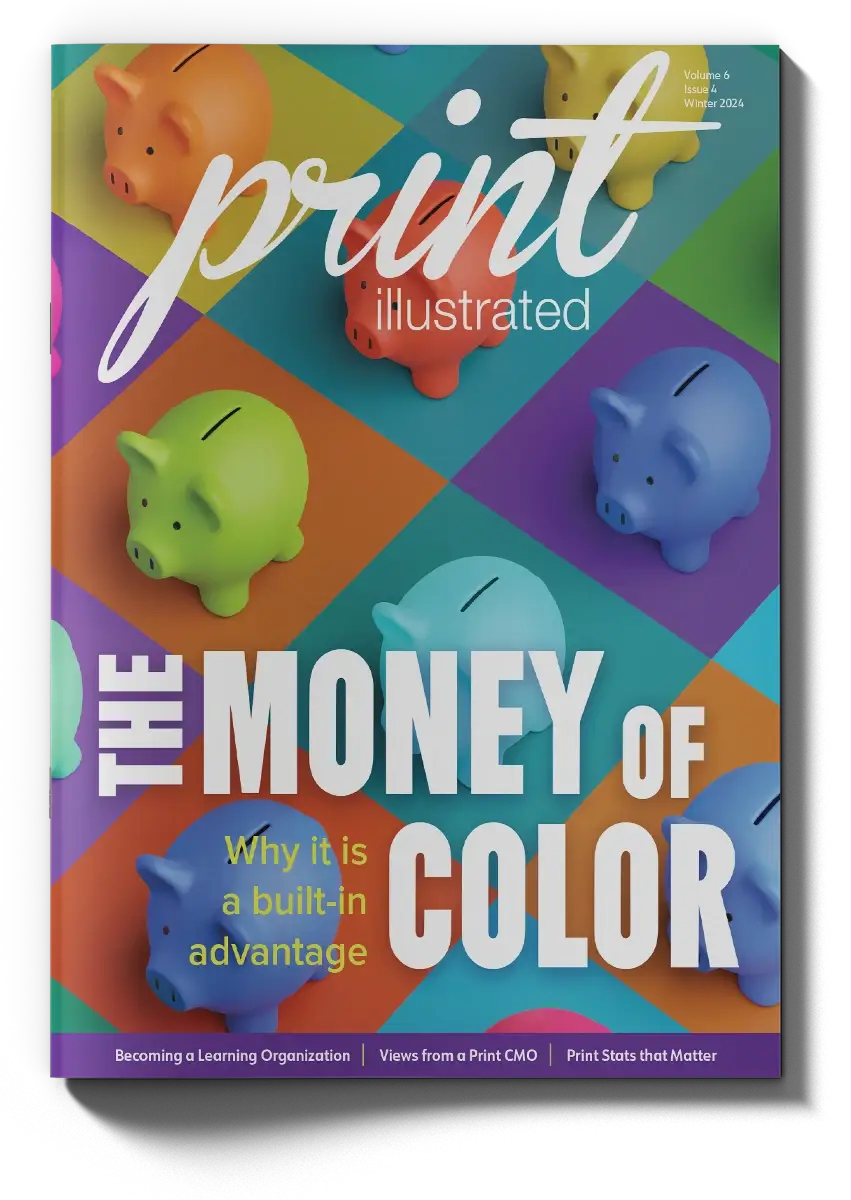One-on-One Thanh Nguyen, CMO, The Standard Group

With an impressive background in multichannel marketing and strategic innovation, Thanh Nguyen, CMO of The Standard Group, brings a wealth of expertise to the print industry. As a key member of the executive team, Thanh oversees not only marketing strategy and positioning but also the execution of advanced marketing initiatives. His role integrates closely with the sales and digital solutions teams, focusing on market expansion, product innovation, and developing forward-thinking solutions like brand and marketing portals, marketing automation, print activation technologies, and multichannel platforms. Thanh’s dedication to impactful marketing has led to numerous award-winning campaigns recognized by USPS, HP, and Neographics, each designed to elevate client engagement, inspire prospective customers, and drive growth for The Standard Group.
What are the key shifts you’ve observed over the years, and how should print companies adapt to remain competitive and relevant?
In today’s market, print businesses like The Standard Group must be as innovative and integrated as their clients. Our marketing strategy needs to align with where clients engage, digest content, and find growth resources. This requires visibility across digital platforms, enhanced brand touchpoints, and services that keep pace with the evolving needs of our clients’ marketing efforts.
Over recent years, we’ve seen substantial changes in the print industry. Established Print Management companies like HH Global, Williams Lea, ASB, and Smart Source have matured, reshaping market expectations. Additionally, print and marketing budgets have tightened, partly due to residual effects of the pandemic and supply chain disruptions. While sectors like higher education face constraints, fields such as healthcare, finance, and manufacturing continue to invest in print as a key driver of their business objectives.
As consumers increasingly prioritize online, mobile, and instant-access experiences, print companies must evolve to provide similar convenience. This includes developing online marketplaces, on-demand and personalized printing solutions, sustainable options, integrated digital applications, and faster turnarounds. By focusing on these areas, we cannot only meet but exceed client expectations, positioning print as a modern and indispensable part of their marketing toolkit.
In your opinion, what is the current role of print in the marketing mix of your clients?
Print holds a unique place in our clients’ marketing mix by delivering sensory-rich experiences that digital channels can’t replicate. Beyond personalization, print provides tactile interactions that elevate storytelling and message impact. Through UV coatings, specialty finishes like embossing, die-cutting, foil stamping, and innovative folds, we create memorable impressions. Unique elements such as scented inks or multimedia integrations like video and audio also bring print to life in fresh ways.
For example, a recent scratch-and-sniff feature in a viewbook effectively captured students’ attention while reinforcing a “fresh start” message. This immersive, hands-on experience enriches a cohesive marketing strategy, complementing digital channels by offering a memorable, physical touchpoint in a digital-centric world.
“The greatest threat to the print industry is complacency—relying on past successes and failing to adapt to current market trends.”
– Thanh Nguyen, CMO, The Standard Group
What do you see as the biggest threats to the print industry today, and where do you see the greatest opportunities for growth and innovation?
The greatest threat to the print industry is complacency—relying on past successes and failing to adapt to current market trends. As digital alternatives grow and clients’ needs evolve, print businesses that resist change or hold on to outdated practices risk losing relevance.
The print industry has immense growth potential by enhancing targeted, personalized, and integrated solutions that complement digital and social channels. Data-driven strategies—like improved tracking, attribution, and personalization—provide greater marketing impact and measurable results.
Embracing Robotic Process Automation (RPA) and Artificial Intelligence (AI) can optimize production, drive efficiency, and enable new marketing strategies. As demand for sustainable solutions grows, print companies can lead by offering recycled paper, FSC-certified products, PrintReleaf programs, on-demand printing, and sustainable sourcing. These efforts appeal to environmentally conscious clients and create a meaningful, long-term value proposition.
What were the primary drivers behind this investing in Fujifilm’s J Press 750?
The addition of the Fujifilm J Press 750 was driven by growing demand for on-demand, short-run printing across various materials, from catalogs to packaging. We sought a B2 or half-sheet format solution with exceptional color fidelity and print quality, and the Fujifilm J Press digital inkjet has proven ideal for this.
The J Press features an expanded color gamut covering up to 90% of the Pantone Library, allowing us to meet specific brand color requirements with precision. It also offers high print clarity, down to intricate details like 2-point type, ensuring top-tier results.
With a 23″x29.5″ sheet size, the J Press enables us to handle jobs traditionally printed offset on our digital press. This transition improves efficiency, broadens our project range, and allows quicker turnaround times.
The J Press’s variable data printing and personalization capabilities expand our offerings, especially in direct mail and influencer marketing. This enables us to support highly targeted campaigns, meeting the growing demand for impactful, customized print solutions.
With the addition of advanced technology like the Fujifilm J Press 750, what do you see as the next frontier for print businesses?
As digital inkjet technology advances, expanded sheet sizes will be a key growth area. While the Fujifilm J Press 750 has a 23″ x 29.5″ press sheet size, newer options like the KBA VariJet offer a full 29″ x 41″ sheet. This opens doors for larger-format projects and greater versatility, enhancing our ability to meet diverse client needs. Additionally, digital inkjet presses are highly automated and user-friendly, requiring minimal training—an advantage for faster adaptation by newer press operators.
The Fujifilm J Press’s variable data printing enables highly personalized, 1:1 communication. Tailoring messages to each recipient increases engagement and effectiveness, producing measurable results. Our BeyondMail technology further amplifies this through integrated digital and social tools, including mail tracking, USPS Informed Delivery, call tracking, social media follow-up, and retargeting. These integrations make each campaign more impactful and versatile.
Combining traditional print with digital technology allows companies like The Standard Group to offer a seamless blend of physical and digital touch points. By continually adopting and refining new technologies, we meet modern expectations for speed, personalization, and multi-channel interaction, ensuring we stay competitive and deliver unmatched value to our clients.

